Deutsche Oper Berlin
Madame Butterfly
Opera
Bismarckstraße 35, 10627 Berlin
Giacomo Puccini

© Bettina Stöß
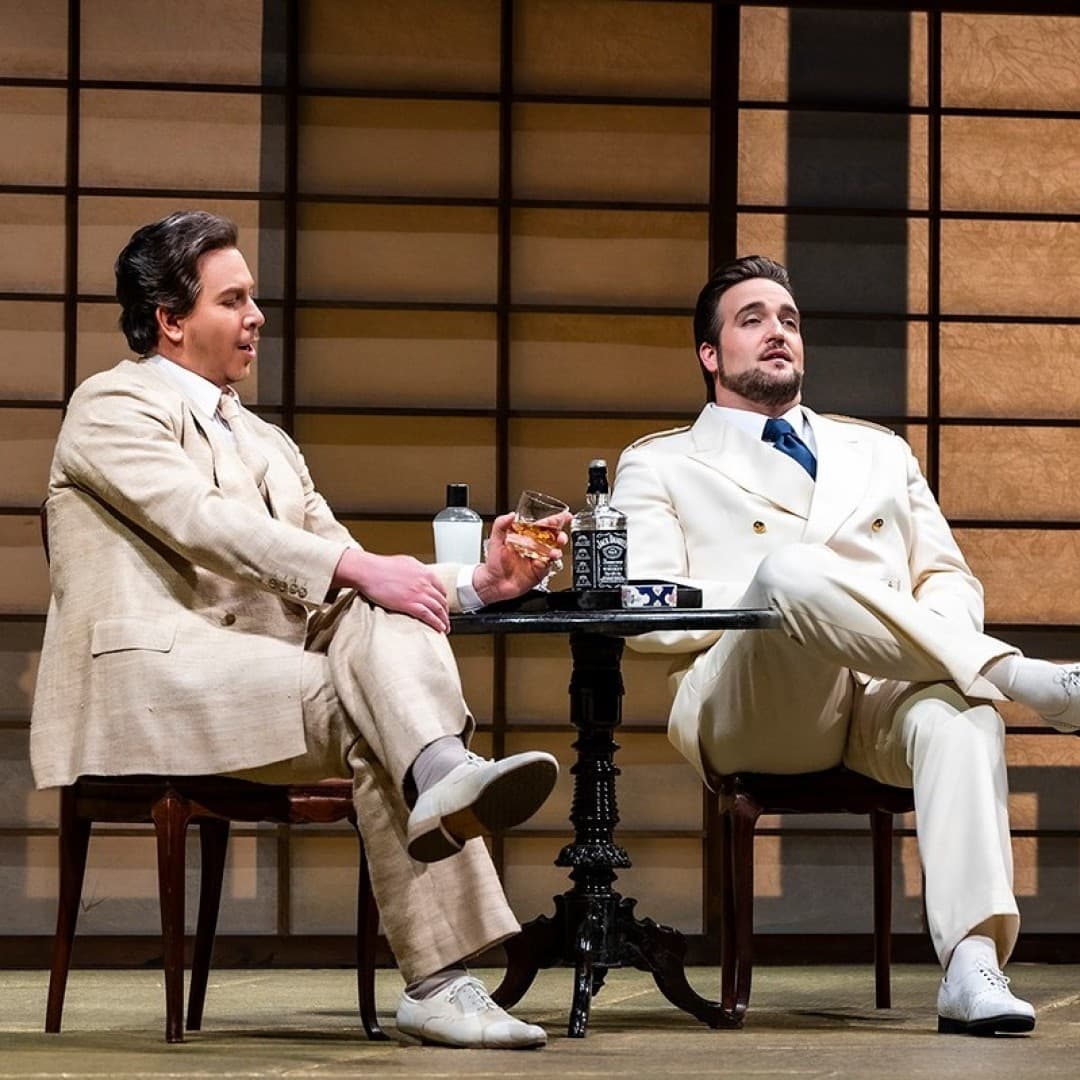
© Bettina Stöß
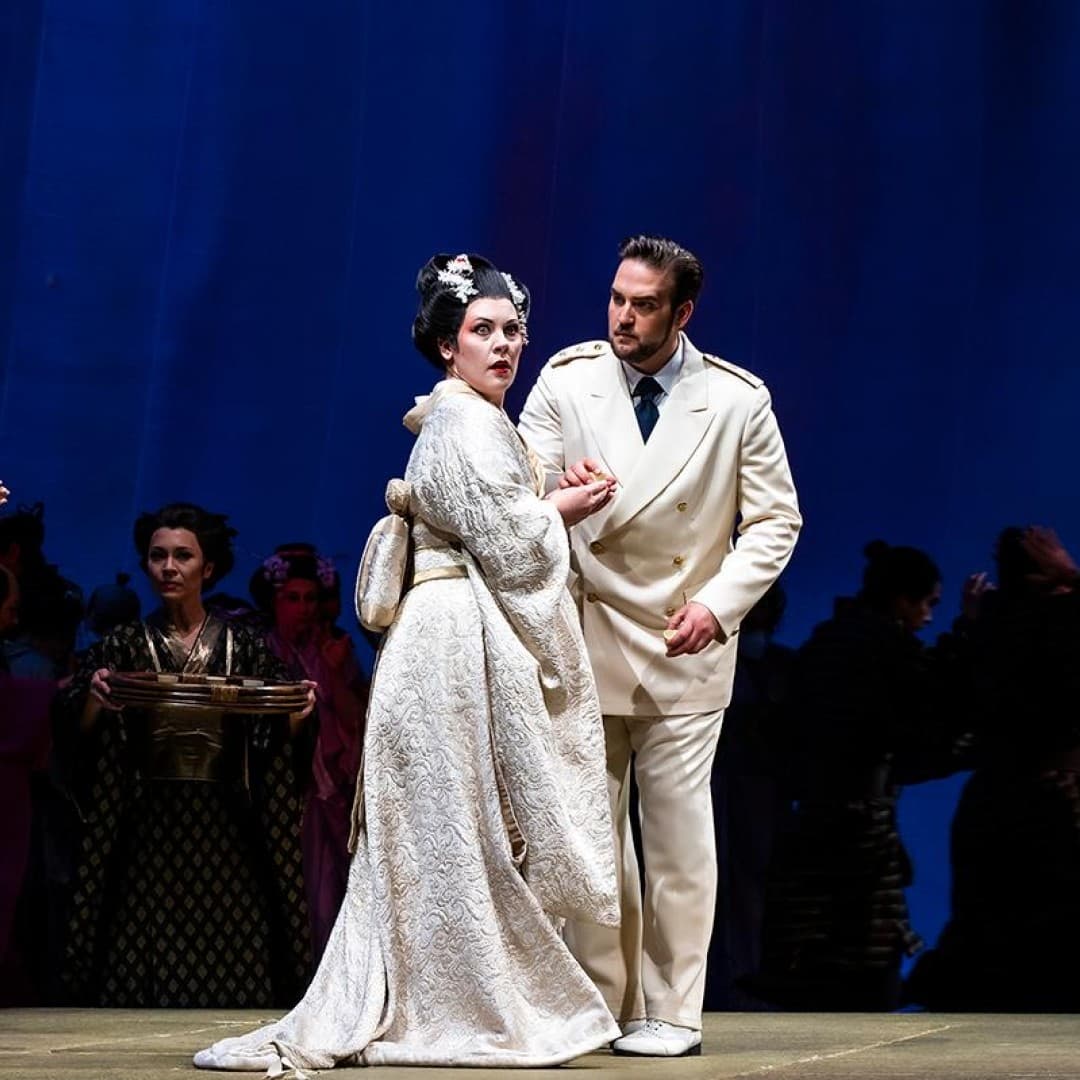
© Bettina Stöß
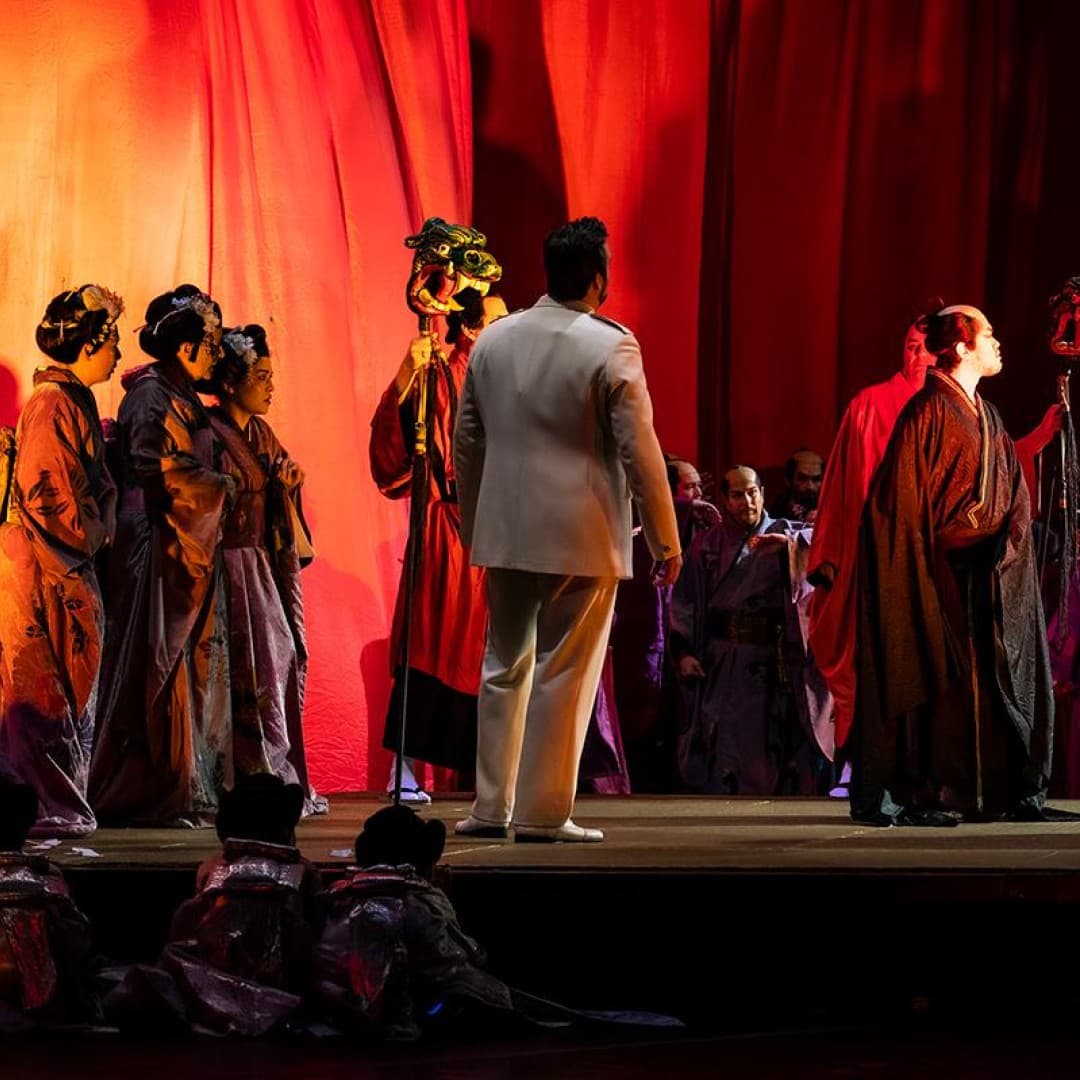
© Bettina Stöß
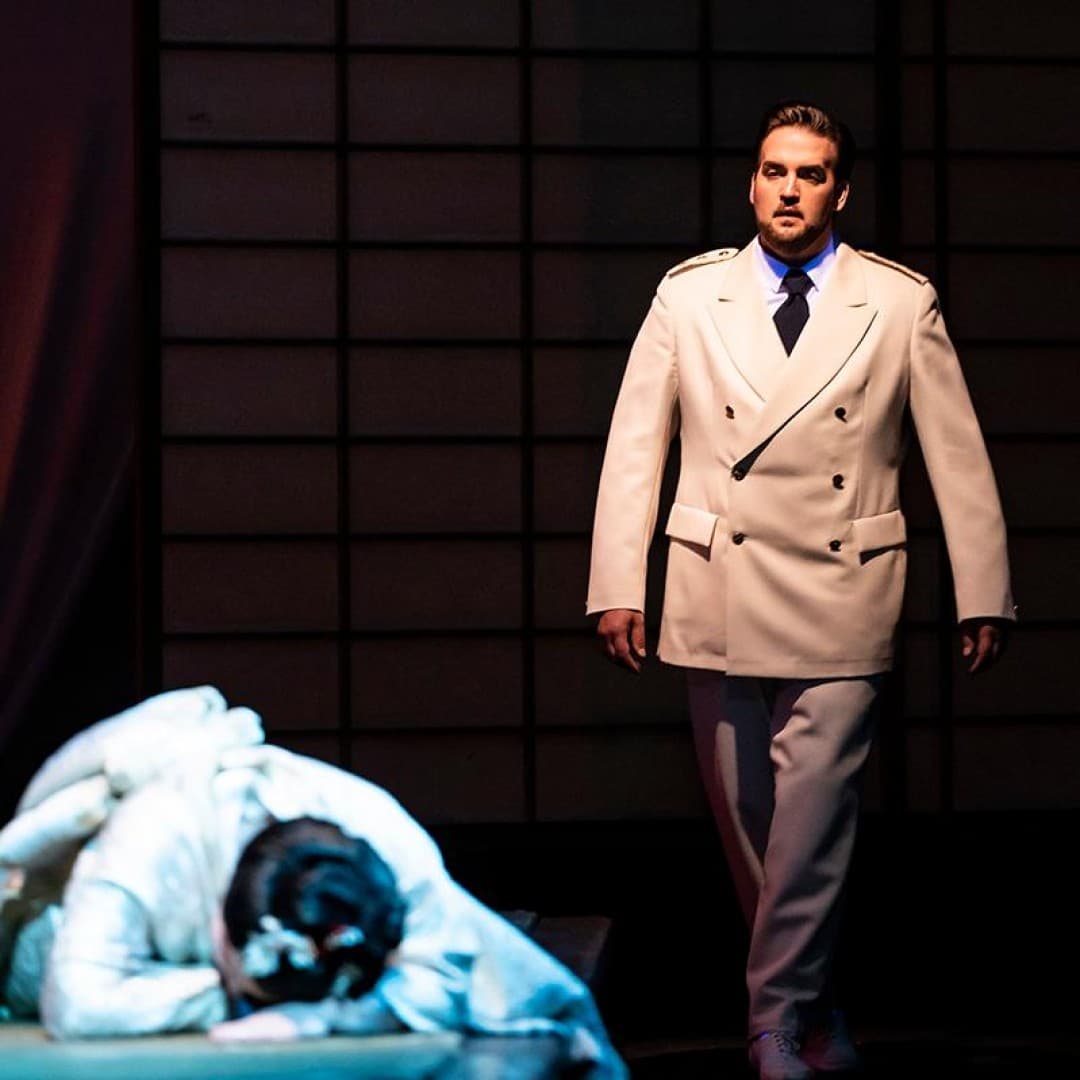
© Bettina Stöß
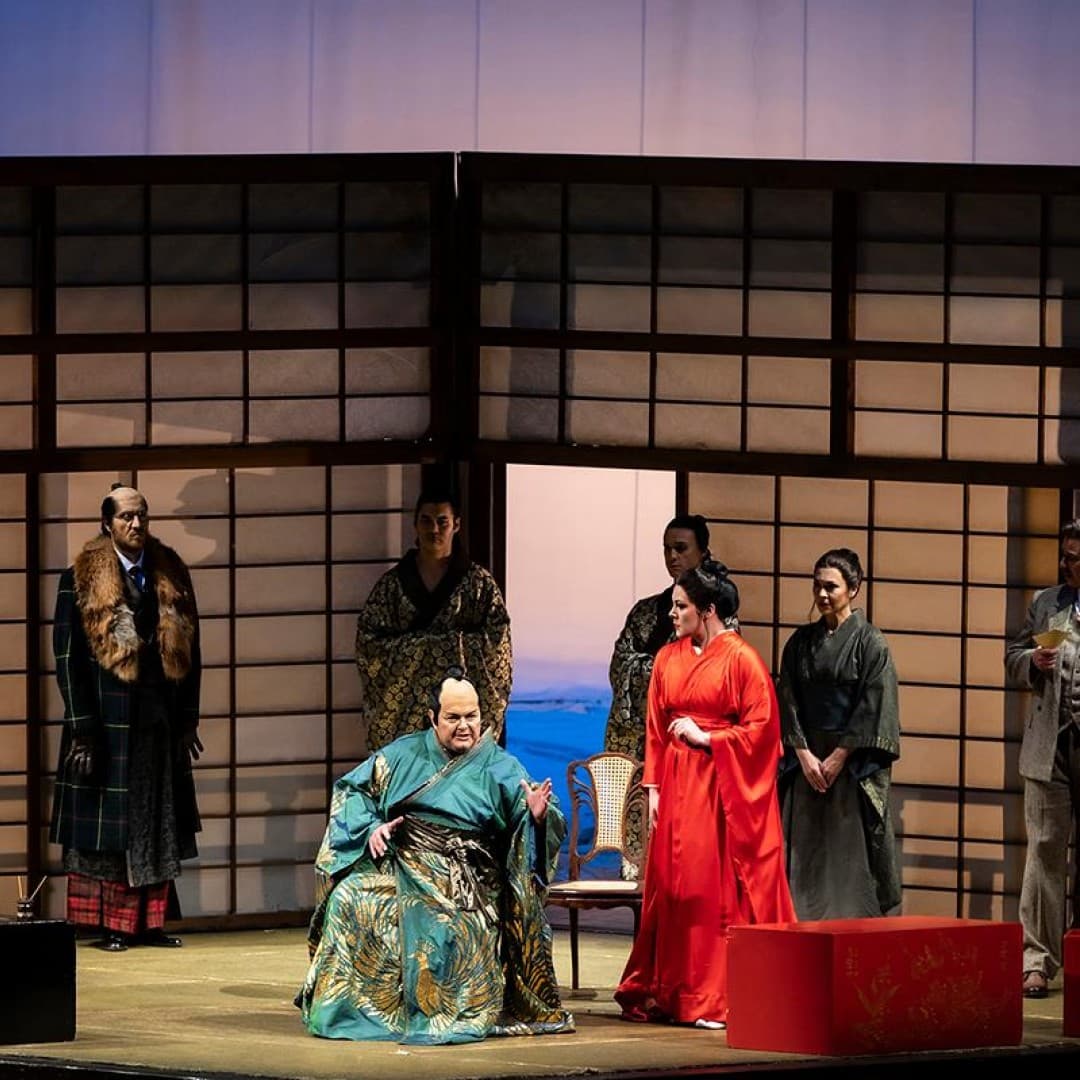
© Bettina Stöß
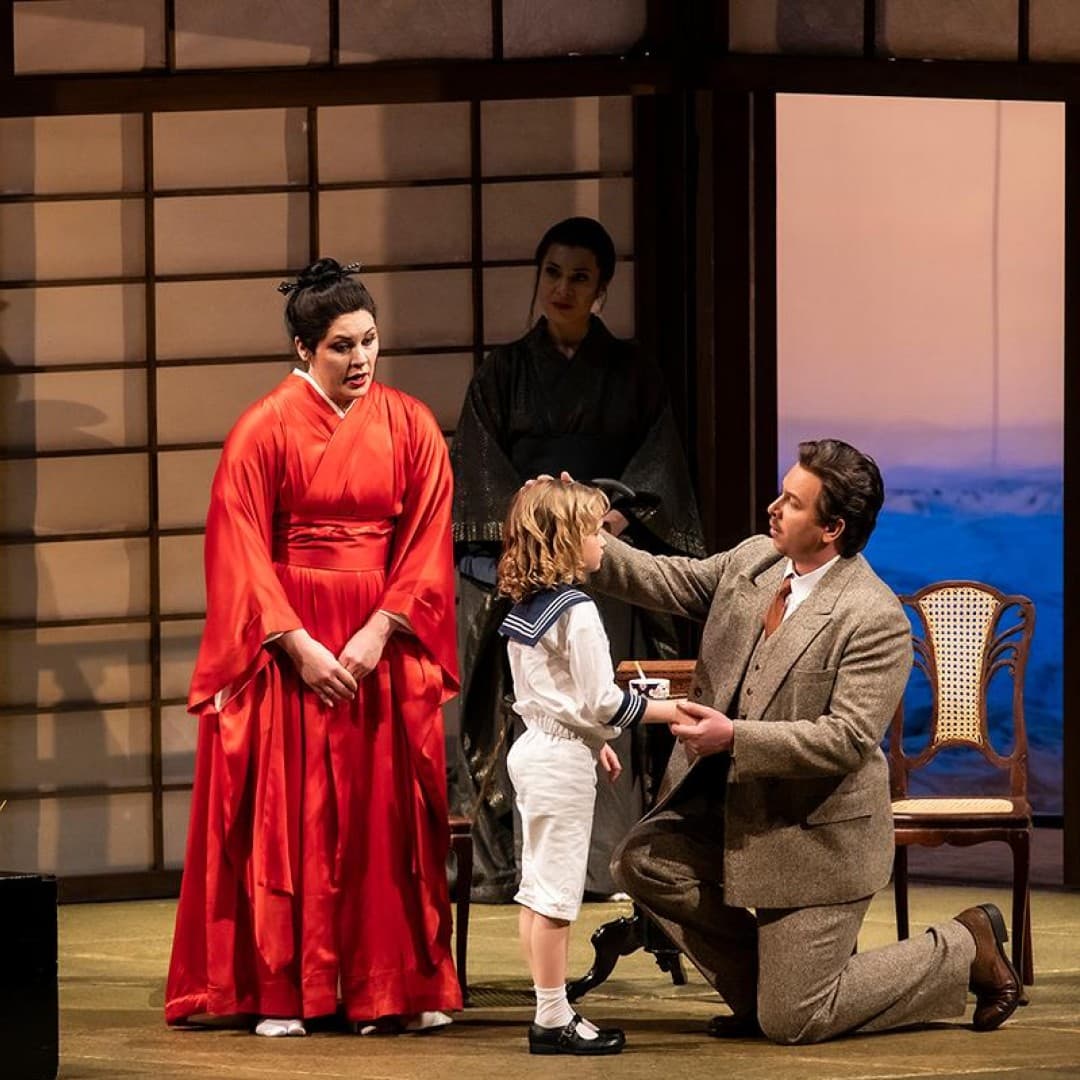
© Bettina Stöß
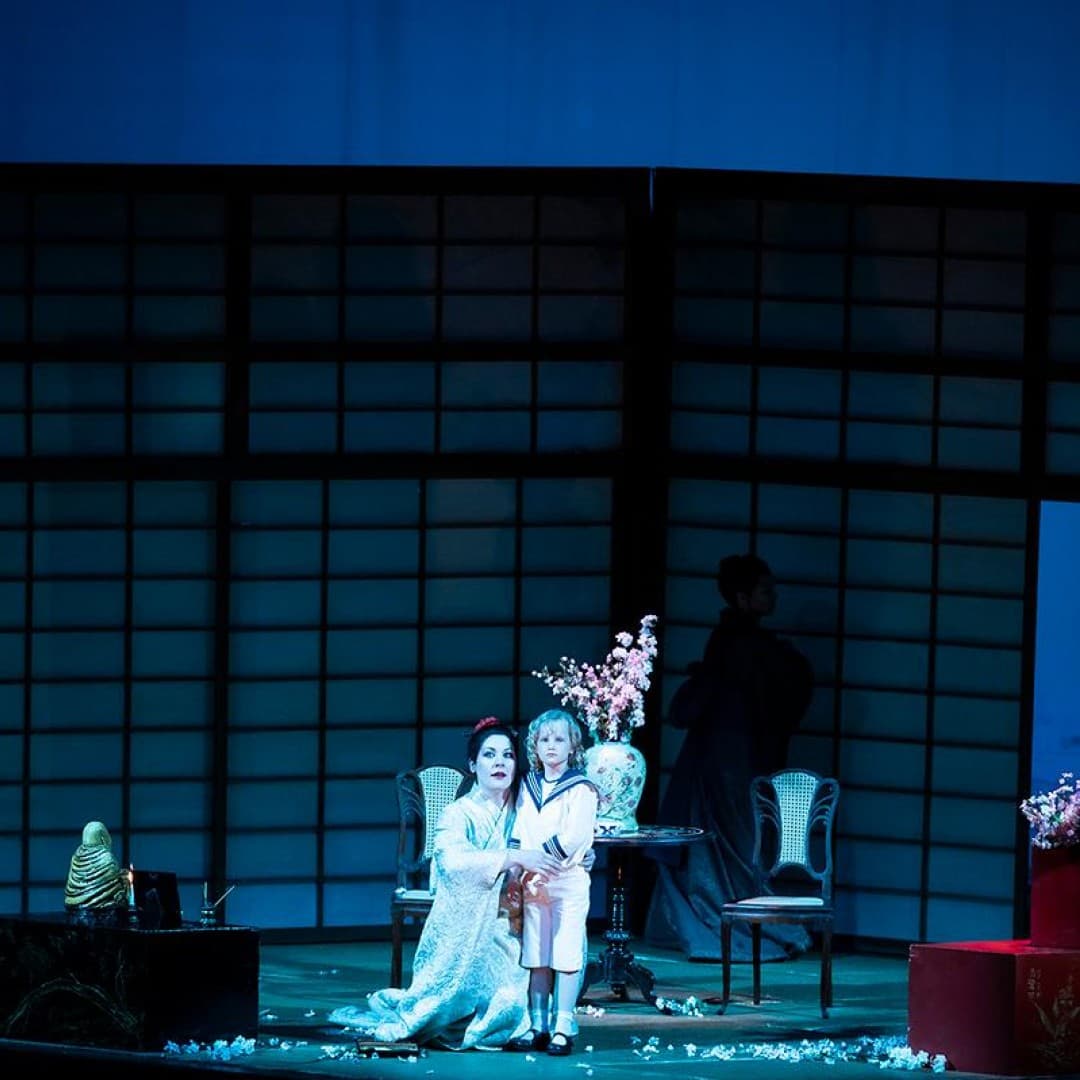
© Bettina Stöß
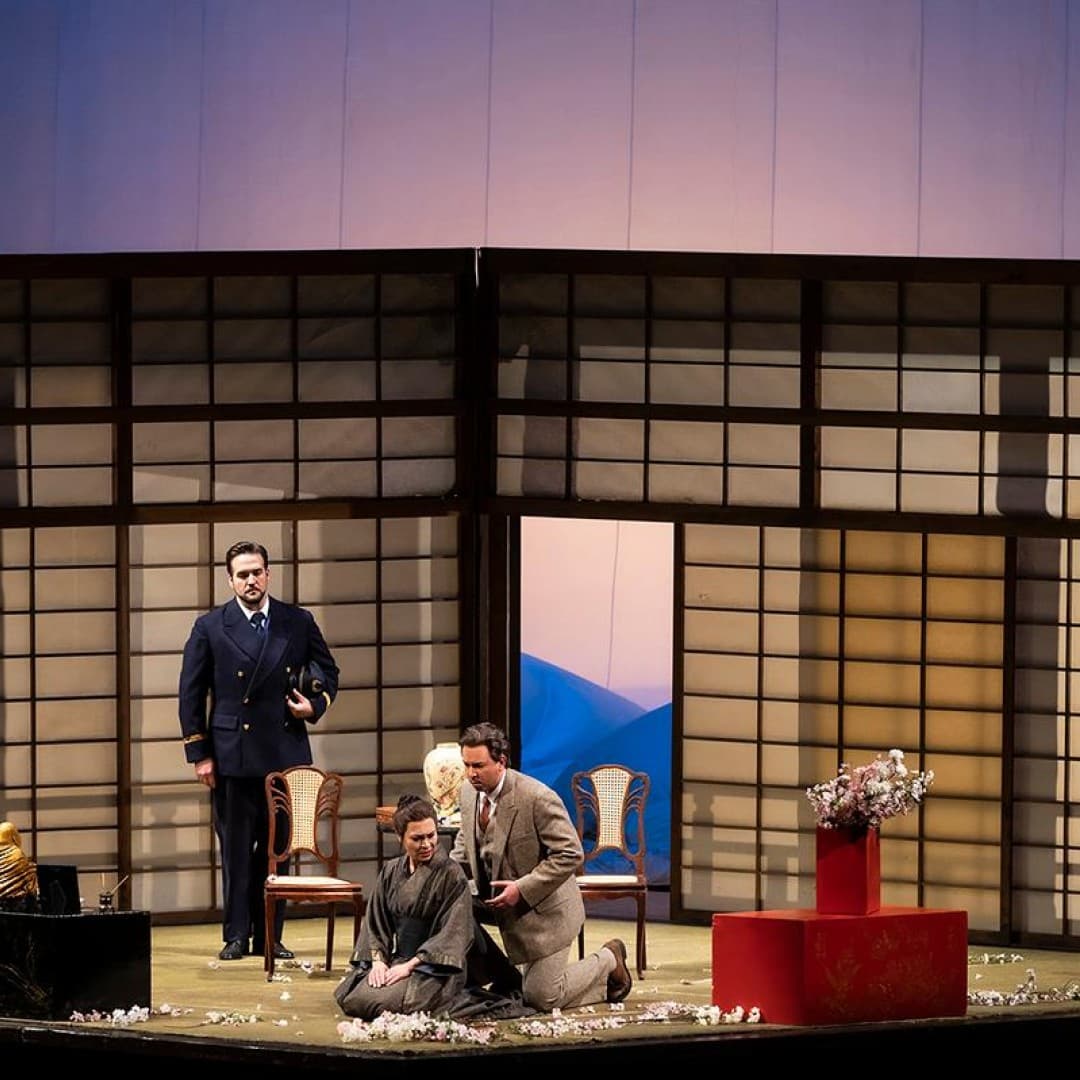
© Bettina Stöß
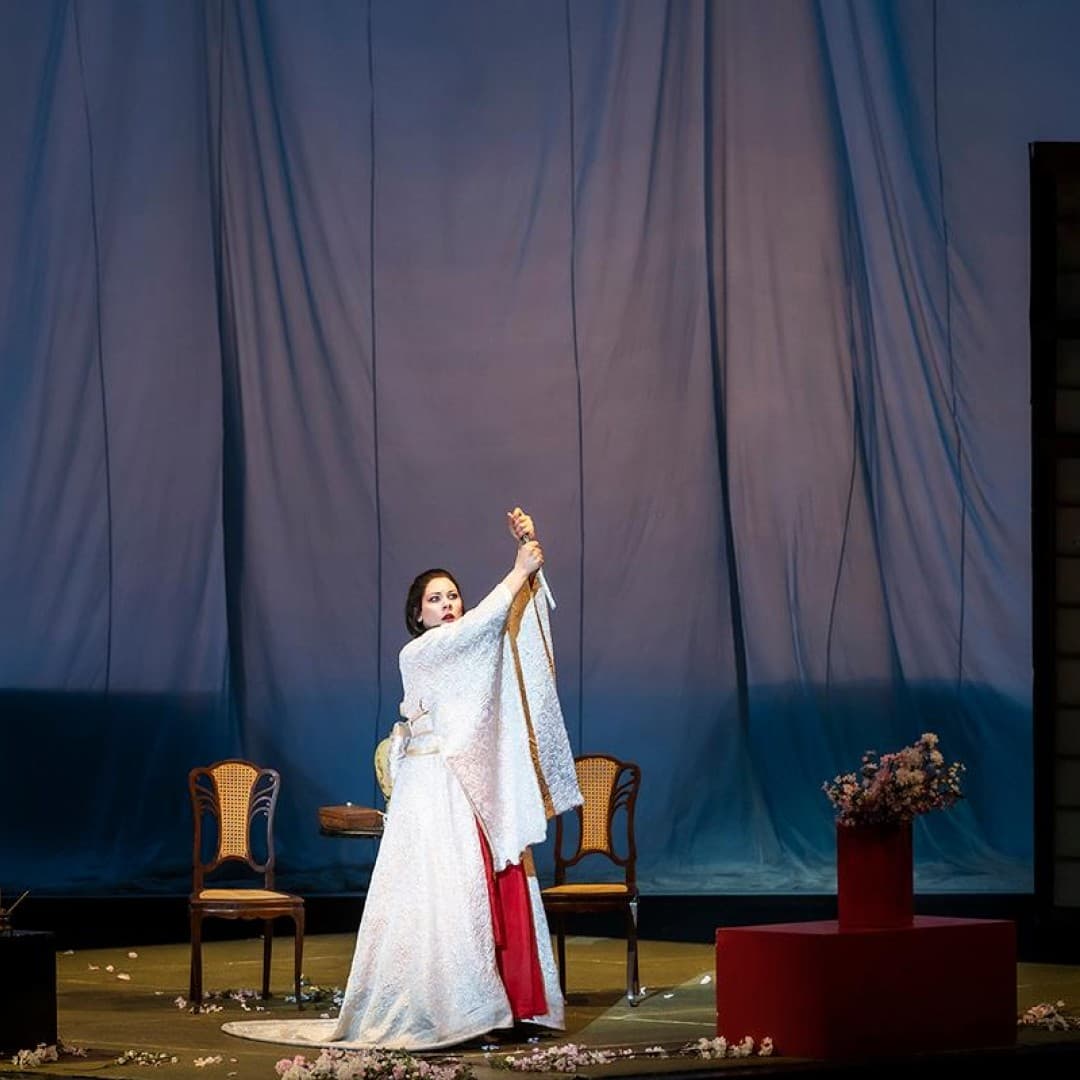
© Bettina Stöß
Description
With this opera, Puccini created what is arguably his most powerful stage work. Tragic is not only the illusion of great love to which 15-year-old Cio-Cio San succumbs, but also her fundamental sense of loneliness: rejected by the Japanese because she wants to be American, she is not accepted by the Americans as one of their own...
About the work
Lieutenant Pinkerton is attached to an American ship currently moored in Nagasaki harbour. He has been courting a 15-year-old geisha girl named Cio-Cio-san, known as Butterfly, who is from a poor but genteel family and takes love very seriously. Pinkerton wants to enter into a “time-limited marriage” – not uncommon between European men and geishas at the time – and is even being helped by Goro, the marriage agent, to find a cottage in which they can spend their honeymoon. The US consul, Sharpless, warns him against such a step, but Pinkerton brushes him off and even toasts the day when he will take an American to be his “real” wife.
The repercussions of this foreign liaison for the Japanese girl, who has even converted to the creed of her lover, turn out to be grave: she is shunned by her family after the wedding and Pinkerton is hard put to console his “butterfly”. Three years go by. Cio-Cio is living in seclusion with her young child and her faithful servant Suzuki. She declines all marriage proposals from Prince Yamadori as she is persistent in her belief that Pinkerton will return. When Sharpless arrives with a note from Pinkerton asking him to inform her that he is now married to an American woman and will shortly be arriving in Nagasaki, Sharpless is horrified to see that the affair has produced a child and cannot bring himself to mention Kate, the new wife. Cio-Cio, overjoyed, decorates her home, dons her bridal dress and awaits her beloved husband. When Pinkerton visits with Kate and the consul, Suzuki is given the full facts: she is to persuade Butterfly to surrender her child. Pinkerton can’t bear to face Cio-Cio and ducks out of a face-to-face encounter. Butterfly catches sight of the other woman and realises that Pinkerton has come not to stay but to take the child. She asks for half an hour in which to bid farewell to her son. Then she kills herself.
“There are elements of theatre that don’t necessarily overlap. It is meant to interest us, surprise us, touch us. What has my life got to do with heroes and immortal characters? I am uneasy around those kinds of people. As a musician I don’t deal in large scale and grand issues; it’s the little things that make an impression on me and which I like to explore. I liked Manon, for instance, because she had a big heart and no artifice beyond that … And that’s what drew me to Butterfly, because she’s such a transparent, feminine creature yet capable of loving unto death.” Puccini referred to Madame Butterfly as his favourite and best work, and indeed it is perfectly in line with his “music of small things” motto. Filigree musical details, delightful melodies for singers, subtly incorporated exotica and sensitive blending of tonal colours in the orchestra have not only made the work an evergreen but also – as with Puccini’s other operas – given subsequent composers something to aspire to.
About the production
At the core of the production at the Deutsche Oper Berlin is the tragedy of the young woman who stays true to her love, despite the misgivings of all those around her. The moody set design, eschewing any folkloric tendency, lends itself to the charm of the piece.
About the work
Lieutenant Pinkerton is attached to an American ship currently moored in Nagasaki harbour. He has been courting a 15-year-old geisha girl named Cio-Cio-san, known as Butterfly, who is from a poor but genteel family and takes love very seriously. Pinkerton wants to enter into a “time-limited marriage” – not uncommon between European men and geishas at the time – and is even being helped by Goro, the marriage agent, to find a cottage in which they can spend their honeymoon. The US consul, Sharpless, warns him against such a step, but Pinkerton brushes him off and even toasts the day when he will take an American to be his “real” wife.
The repercussions of this foreign liaison for the Japanese girl, who has even converted to the creed of her lover, turn out to be grave: she is shunned by her family after the wedding and Pinkerton is hard put to console his “butterfly”. Three years go by. Cio-Cio is living in seclusion with her young child and her faithful servant Suzuki. She declines all marriage proposals from Prince Yamadori as she is persistent in her belief that Pinkerton will return. When Sharpless arrives with a note from Pinkerton asking him to inform her that he is now married to an American woman and will shortly be arriving in Nagasaki, Sharpless is horrified to see that the affair has produced a child and cannot bring himself to mention Kate, the new wife. Cio-Cio, overjoyed, decorates her home, dons her bridal dress and awaits her beloved husband. When Pinkerton visits with Kate and the consul, Suzuki is given the full facts: she is to persuade Butterfly to surrender her child. Pinkerton can’t bear to face Cio-Cio and ducks out of a face-to-face encounter. Butterfly catches sight of the other woman and realises that Pinkerton has come not to stay but to take the child. She asks for half an hour in which to bid farewell to her son. Then she kills herself.
“There are elements of theatre that don’t necessarily overlap. It is meant to interest us, surprise us, touch us. What has my life got to do with heroes and immortal characters? I am uneasy around those kinds of people. As a musician I don’t deal in large scale and grand issues; it’s the little things that make an impression on me and which I like to explore. I liked Manon, for instance, because she had a big heart and no artifice beyond that … And that’s what drew me to Butterfly, because she’s such a transparent, feminine creature yet capable of loving unto death.” Puccini referred to Madame Butterfly as his favourite and best work, and indeed it is perfectly in line with his “music of small things” motto. Filigree musical details, delightful melodies for singers, subtly incorporated exotica and sensitive blending of tonal colours in the orchestra have not only made the work an evergreen but also – as with Puccini’s other operas – given subsequent composers something to aspire to.
About the production
At the core of the production at the Deutsche Oper Berlin is the tragedy of the young woman who stays true to her love, despite the misgivings of all those around her. The moody set design, eschewing any folkloric tendency, lends itself to the charm of the piece.
Cast
Stephan Zilias
Conductor
Friedrich Praetorius
Conductor
Pier Luigi Samaritani
Director, Stage design, Costume design
Thomas Richter
Chorus Master
Chor der Deutschen Oper Berlin
Chorus
Carmen Giannattasio
Cio-Cio-San
Asmik Grigorian
Cio-Cio-San
Elena Stikhina
Cio-Cio-San
Karis Tucker
Suzuki
Martina Baroni
Suzuki
Lucy Baker
Kate Pinkerton
Attilio Glaser
Benjamin Franklin Pinkerton
Dmytro Popov
Benjamin Franklin Pinkerton
Andrei Danilov
Benjamin Franklin Pinkerton
Thomas Lehman
Sharpless
Germán Olvera
Sharpless
Joel Allison
Sharpless
Burkhard Ulrich
Goro
Jörg Schörner
Prince Yamadori
Paul Minhyung Roh
The Bonze
Byung Gil Kim
The Bonze
Navasard Hakobyan
Imperial Commissioner
Benjamin Dickerson
Official Registrar
Seungeun Oh
La Madre di Cio-Cio-San
Yuuki Tamai
Cugina
Asahi Wada
Zia
Orchester der Deutschen Oper Berlin
Orchestra
Dates
Deutsche Oper Berlin
Bismarckstraße 35, 10627 Berlin
To enable Google Maps please accept functional cookies.

